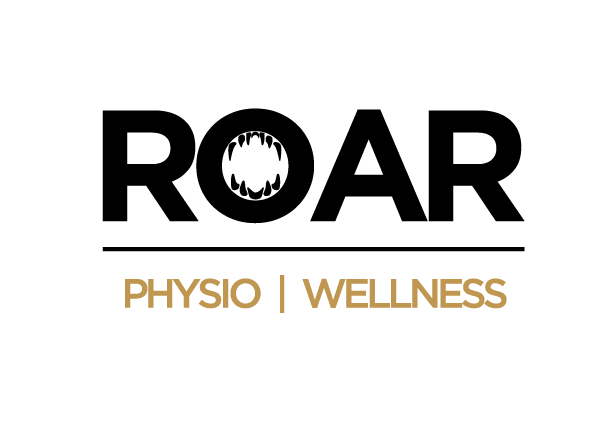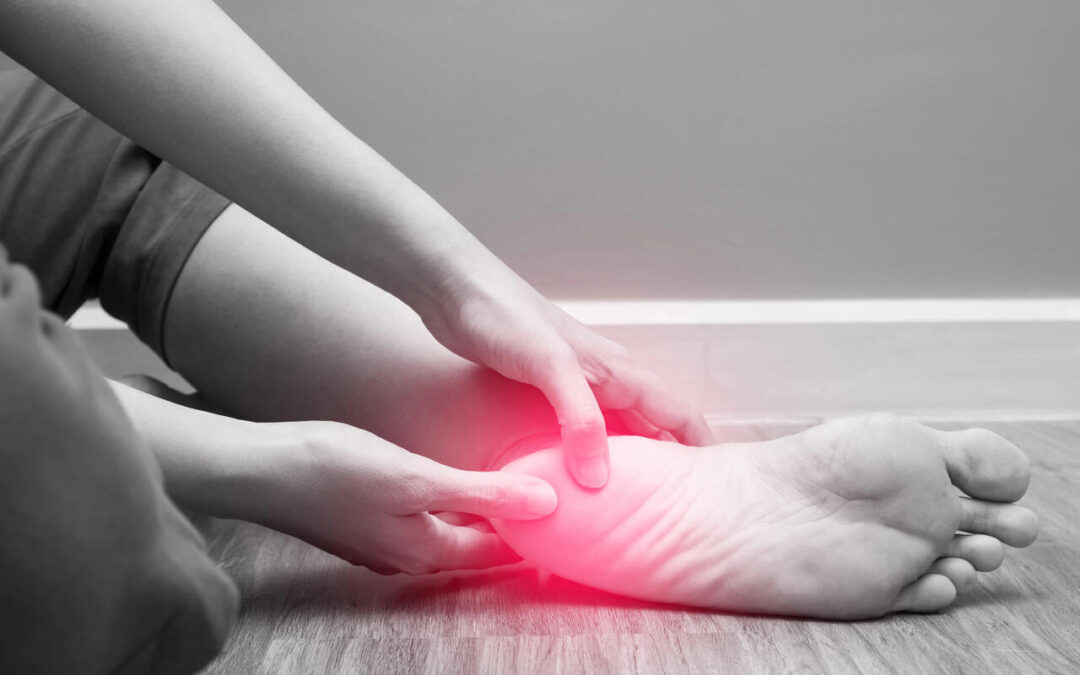Plantar fasciitis is a common and often frustrating condition that causes persistent heel pain, especially during the first steps of the day or after long periods of standing. While stretching and rest can help, more targeted approaches may be necessary for lasting relief. In this blog, we’ll take an in-depth look at dry needling for plantar fasciitis—how it works, how it differs from acupuncture, what to expect during treatment, and how it fits into a comprehensive recovery plan. Whether you’re just starting your recovery journey or seeking advanced strategies for ongoing pain, this blog will help you better understand your options.
What Is Dry Needling?
Dry needling is a therapeutic technique performed by trained physiotherapists in which thin, sterile needles are inserted directly into tight or irritated muscles, known as myofascial trigger points. These trigger points are often responsible for chronic tension and pain, and dry needling works by:
- Releasing muscle knots and tension
- Improving blood flow and oxygenation to the affected tissue
- Stimulating the body’s natural healing processes
- Interrupting pain signals sent from irritated nerves
Although it involves similar tools, dry needling is not the same as acupuncture. While acupuncture is rooted in traditional Chinese medicine, dry needling is based on modern anatomy and musculoskeletal science.
Benefits of Dry Needling for Plantar Fasciitis
Plantar fasciitis typically involves inflammation or microtears in the plantar fascia—a thick band of connective tissue along the bottom of the foot. This can lead to sharp, stabbing pain, especially in the heel. Dry needling targets the muscles and fascia contributing to the strain on this tissue. Benefits include:
- Reducing Tension in the Calf and Foot Muscles: Tightness in the gastrocnemius, soleus, and intrinsic foot muscles can worsen plantar fasciitis. Dry needling releases tension in these areas.
- Decreasing Localized Inflammation and Pain: Needling helps stimulate healing and modulate inflammatory responses, promoting faster recovery.
- Improving Tissue Function and Flexibility: With reduced muscle tightness, the plantar fascia can move more freely, reducing irritation during walking or exercise.
- Enhancing Effectiveness of Other Treatments: When combined with stretching, strengthening, and manual therapy, dry needling may accelerate overall healing.
By addressing muscular dysfunction contributing to plantar fascia stress, dry needling provides a direct and efficient method for pain reduction and recovery support.
Plantar Fasciitis Treatment: Dry Needling vs. Acupuncture
Although both dry needling and acupuncture use thin needles, they differ significantly in purpose, application, and overall philosophy. Dry needling is grounded in modern musculoskeletal science and aims to release muscle tension by targeting trigger points within the muscles and fascia. It is commonly used to treat localized pain and dysfunction in conditions like plantar fasciitis, where direct needling into the affected tissues can reduce tightness and restore mobility.
Acupuncture, on the other hand, is based on traditional Chinese medicine and focuses on restoring balance to the body’s energy flow—or Qi—by placing needles along specific meridian points. While acupuncture may be used for general well-being, stress, or pain management, dry needling is designed for musculoskeletal issues and involves direct stimulation of tight or dysfunctional tissue. In treating plantar fasciitis, dry needling is often preferred for its ability to mechanically release tension in the foot and lower leg, promote healing, and reduce inflammation through localized physiological responses. For those seeking focused, anatomy-based treatment, dry needling provides a more targeted approach compared to the holistic, energy-centered method used in acupuncture.
Dry Needling Session for Plantar Fasciitis: What to Expect
A dry needling session for plantar fasciitis typically involves:
- Initial Assessment: The physiotherapist will assess your foot, ankle, and calf to determine which muscles are contributing to the condition.
- Needle Insertion: Thin needles are gently inserted into specific trigger points in the calf muscles, foot muscles, or along the plantar fascia itself.
- Muscle Response: You may feel a brief twitch or cramping sensation when the needle hits a trigger point—this is a normal and therapeutic response.
- Duration: Needles are usually left in place for a few seconds to several minutes, depending on the treatment plan.
- Post-Treatment Care: After the session, you may receive gentle stretching or instructions for at-home care to support your recovery.
The session is generally quick and minimally invasive. Most people are able to return to normal activity shortly afterward, though some may feel mild soreness for 24–48 hours.
Is Dry Needling for Plantar Fasciitis Treatment Painful?
Despite involving needles, dry needling is generally not considered painful by most individuals. During the actual insertion, many people feel only a light pinch or a slight pressure as the fine needle enters the skin. Once the needle reaches a tight or irritated muscle, it may trigger a brief muscle twitch or cramping sensation, which is a sign that the therapy is targeting the right area. This twitch response is often followed by a sense of release or reduction in tension.
After the session, it’s common to feel a dull ache or mild soreness in the treated area—similar to how muscles might feel after a good workout. These sensations typically resolve within 24 to 48 hours. To ensure comfort, physiotherapists carefully monitor the individual’s response and adjust their technique as needed. While temporary discomfort is possible, most people find that the benefits of dry needling—especially reduced pain and improved mobility—outweigh any short-lived side effects. Clear communication with your therapist throughout the session can further improve your comfort and outcome.
Possible Risks or Side Effects of Dry Needling for Plantar Fasciitis
Dry needling is generally safe when performed by a trained and licensed practitioner, but like any treatment, there are potential side effects and considerations:
- Mild Muscle Soreness: Temporary discomfort or achiness at the needling site is common.
- Bruising or Minor Bleeding: This can occur, especially in areas with more superficial blood vessels.
- Fatigue or Dizziness: Some individuals feel temporarily tired or lightheaded post-treatment—hydration and rest can help.
- Rare Complications: Although extremely uncommon, there is a small risk of infection or nerve irritation.
Your physiotherapist will perform a thorough assessment to ensure that dry needling is safe for your condition and will discuss any precautions or contraindications.
How Long Does It Take to See Results from Dry Needling for Plantar Fasciitis?
Results from dry needling can vary depending on individual factors like the duration of symptoms, the intensity of the condition, and your overall health. Some people report noticeable relief in pain and mobility within 24 to 48 hours of the first session. For others, especially those with moderate symptoms, consistent progress becomes more apparent after two to four treatments. Long-standing or chronic plantar fasciitis cases may require a longer treatment window—often six to eight sessions over several weeks—to achieve meaningful and lasting results.
The key to success with dry needling lies in consistency and integration with other therapies. Pairing the needling sessions with stretching, strengthening exercises, proper footwear, and manual therapy typically leads to faster and more complete recovery. Staying engaged with your treatment plan and communicating with your physiotherapist about your response will help tailor the approach to your needs and improve outcomes over time.
Get Your Roar Back
Dry Needling for Plantar Fasciitis: Tips for Pre and Post-Session Care
To get the most out of your dry needling session and support your body’s healing response, it helps to follow a few simple pre- and post-treatment guidelines:
Before Your Session:
- Stay Hydrated: Drinking water before treatment helps reduce post-session soreness and supports tissue recovery.
- Avoid Heavy Exercise: It’s best to skip strenuous activity for several hours before your session to avoid added stress on the targeted muscles.
- Wear Comfortable Clothing: Choose loose-fitting pants or shorts to allow easy access to your lower legs and feet.
After Your Session:
- Continue Hydrating: Water helps flush out metabolic waste released during trigger point stimulation.
- Stretch Gently: Light stretching can help reduce soreness and improve mobility after treatment.
- Apply Ice (If Needed): If you experience mild soreness or swelling, applying ice to the treated area can provide relief.
- Avoid Intense Activity: Give your body time to recover by avoiding high-impact exercise for at least 24 hours post-treatment.
Following these simple steps can enhance your comfort and promote more effective healing between sessions.
Can Dry Needling Cure Plantar Fasciitis Permanently?
Dry needling can play a significant role in preventing the recurrence of plantar fasciitis by addressing the muscular and fascial imbalances that contribute to the condition. By releasing tight tissue, improving flexibility, and enhancing mobility, dry needling helps reduce the repetitive strain that often leads to flare-ups. However, to achieve permanent relief, other factors must also be managed. Poor foot mechanics, muscle imbalances, and overuse are common contributors to chronic plantar fasciitis and must be corrected through lifestyle changes, rehabilitation exercises, and footwear adjustments. Dry needling supports these efforts by allowing more comfortable movement and better participation in rehab programs.
While plantar fasciitis can return if contributing factors persist, integrating dry needling into a structured and well-rounded treatment approach greatly reduces the risk of recurrence. With consistency, many people can achieve lasting results and remain pain-free in the long term.
Managing Plantar Fasciitis: Recommended Lifestyle Changes
Your daily habits can either support your recovery or contribute to recurring pain. To manage and prevent plantar fasciitis effectively, consider the following lifestyle changes:
- Wear Supportive Shoes: Choose footwear with good arch support and cushioning. Avoid walking barefoot on hard surfaces.
- Stretch Regularly: Incorporate daily stretches for the calves, Achilles tendon, and plantar fascia to maintain flexibility.
- Strengthen Your Feet and Ankles: Exercises that target foot and lower leg muscles can improve stability and reduce strain on the plantar fascia.
- Limit Prolonged Standing: Take breaks if your job or lifestyle requires standing for long periods. Use anti-fatigue mats if needed.
- Manage Body Weight: Excess weight can increase pressure on the plantar fascia. Maintaining a healthy weight can help reduce the load on your feet.
- Use Orthotics (If Recommended): Custom or over-the-counter orthotic inserts can help correct foot alignment and relieve pressure.
- Avoid Sudden Increases in Activity: Gradually build up the intensity of exercise to avoid overloading your feet too quickly.
By making these adjustments and continuing with a structured recovery plan, you can support long-term relief and prevent flare-ups in the future.
Pain-Free Steps Await
Dry needling offers a focused, evidence-based approach to relieving plantar fasciitis by targeting the muscles and tissues that contribute to heel pain. When combined with supportive therapies and lifestyle changes, it can accelerate healing and reduce the risk of recurrence.
At Roar Physio | Wellness, our team provides individualized treatment plans designed to restore mobility and relieve discomfort. Contact us today to schedule your appointment and discover if dry needling could be a key part of your plantar fasciitis recovery.

